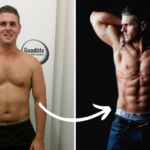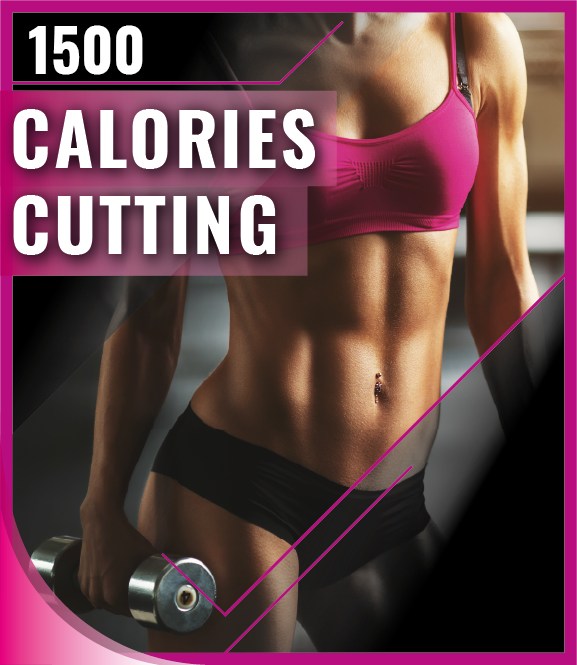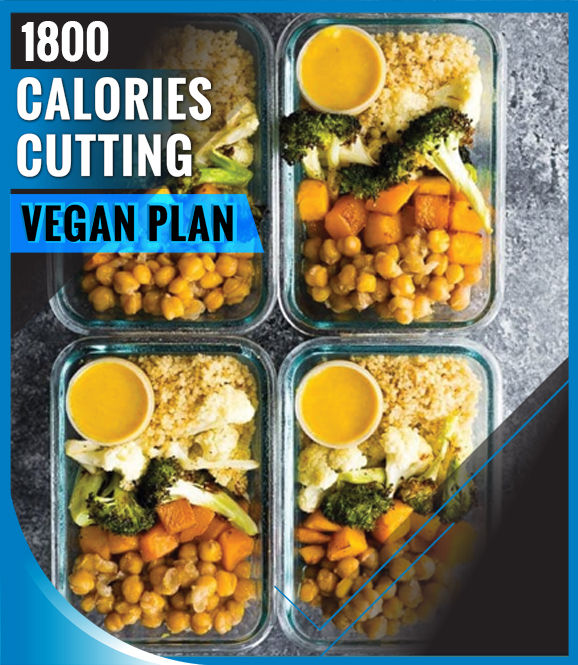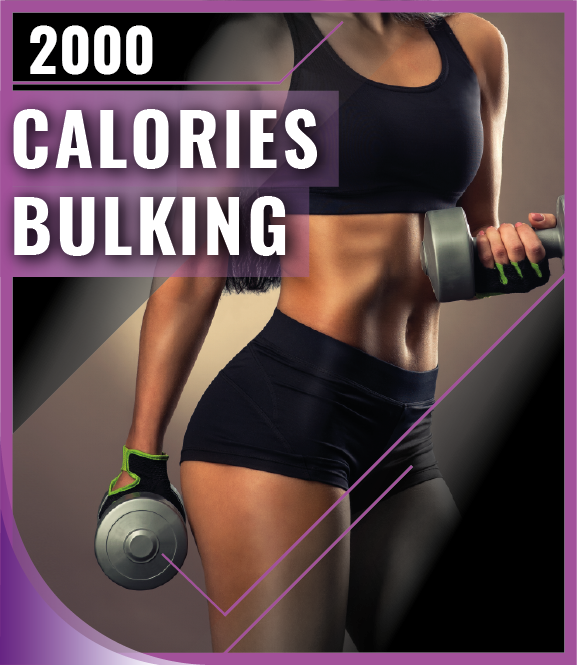In this article, I am going to show you how to calculate your macros using the macronutrient calculator (below) for either losing fat (“cutting”) or building muscle (“bulking”). This article has everything you will ever need to calculate your macros to get into the best shape of your life!
When I finally figured out how to calculate my macros using the macronutrient calculator in this article and eating food that matched my macronutrient targets, my skinny fat transformation unfolded below.

By the end of this article, you will know exactly what ratio of macronutrients you need for the specific goal you are trying to achieve. Also; by learning how much protein, carbohydrate, and fat you need, you will no longer need to worry about the following dietary misconceptions currently plaguing the fitness world. Such as…
- You need to remove refined sugar from your diet to lose fat
- Paleo is the only way to get into shape
- Eating gluten is the reason why you’re fat
- Cutting out processed foods is the answer to weight loss
- The list goes on…
The Macronutrient Calculator
And there you have it 🙂
You’ll notice that you can select one of three goals or “Presets” from within the macronutrient calculator which will determine your daily calorie target.
- Cut – Maximum Fat Loss
- Maintain
- Bulk – Maximum Muscle Gain
From the macronutrient calculator above, you will select the goal you are trying to achieve from the Presets drop down menu. Once you do this, the macronutrient calculator will give you the Total Calories that you need to set as your daily target, followed by a breakdown of that target into protein, carbohydrate, and fat (in grams.)
If you have more than 6 months of weight training experience, then your goal should be to either bulk for maximum muscle growth, or cut for maximum fat loss. If you have less than 6 months of experience or you are an absolute beginner weight lifter, you will benefit from a body re-composition. (Or build muscle and lose fat simultaneously!)
How to Use the Macronutrient Calculator
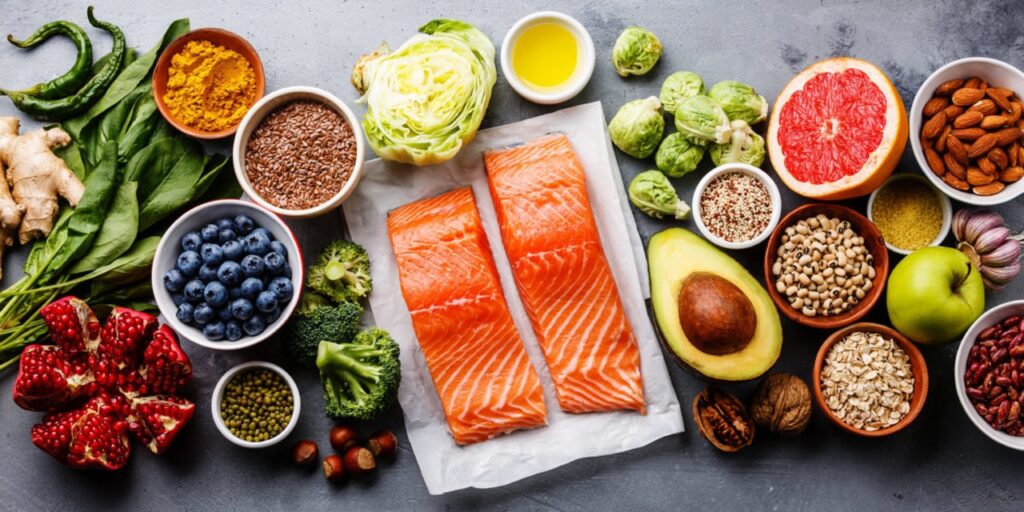
The macronutrient calculator above is very straightforward to use. Here are the steps:
- Select either Imperial (lbs.) or Metric (kgs.)
- Enter your current body weight and approximate body fat percentage
- Your planned activity level
The macronutrient calculator will then output the following:
- Basal Metabolic Rate (BMR)
- Total Daily Energy Expenditure (TDEE)
I know this might seem complicated but I will break it down, starting with Basal Metabolic Rate (BMR).
The Macronutrient Calculator and Basal Metabolic Rate (BMR)
It simply means the amount of energy (or calories) that you burn when your body is at rest. Basal means “base” or foundation. It is the amount of energy required to sustain life.
The macronutrient calculator in this article uses one of the most popular equations for determining BMR; the Katch-McArdle equation.
What is Total Daily Energy Expenditure (TDEE)?
I promise this is the last bit of terminology 🙂
Your TDEE is simply how many calories you burn in a 24-hour period of time when exercise is taken into account. To calculate your TDEE, you need to know how many calories you burn at rest (your BMR) then adjust it by using an Activity Multiplier.
In the macronutrient calculator above, you’ll see that you can select “Activity Level” from a drop-down menu. This is essentially adjusting your BMR by the activity multiplier to give you your TDEE. Pretty awesome huh? 🙂 Don’t worry… it doesn’t get anymore complicated than this.
By using this method, you don’t need to use daily spreadsheets or gadgets to track your cardio workouts. Just select the Activity Level that suits your lifestyle (i.e., 1-3 hours of training per week).
This method of calculating your TDEE is not perfectly accurate but it is good enough as a starting point, even for guys like me that participated in competitive bodybuilding! The calorie and macro targets this macronutrient calculator provide is a starting point only. It’s not going to be perfectly accurate (and it doesn’t need to be!)
Once you have a starting point, it will become necessary to make tweaks and adjustments to your calorie and macronutrient targets, depending on how quickly you gain or lose weight.
Once again, I’ve come across so many people that try and achieve perfect accuracy in calculating their calorie and macro targets. It’s completely unnecessary and not very practical (nor sustainable!)
Goal #1: Macros for Fat Loss (“Cutting”)
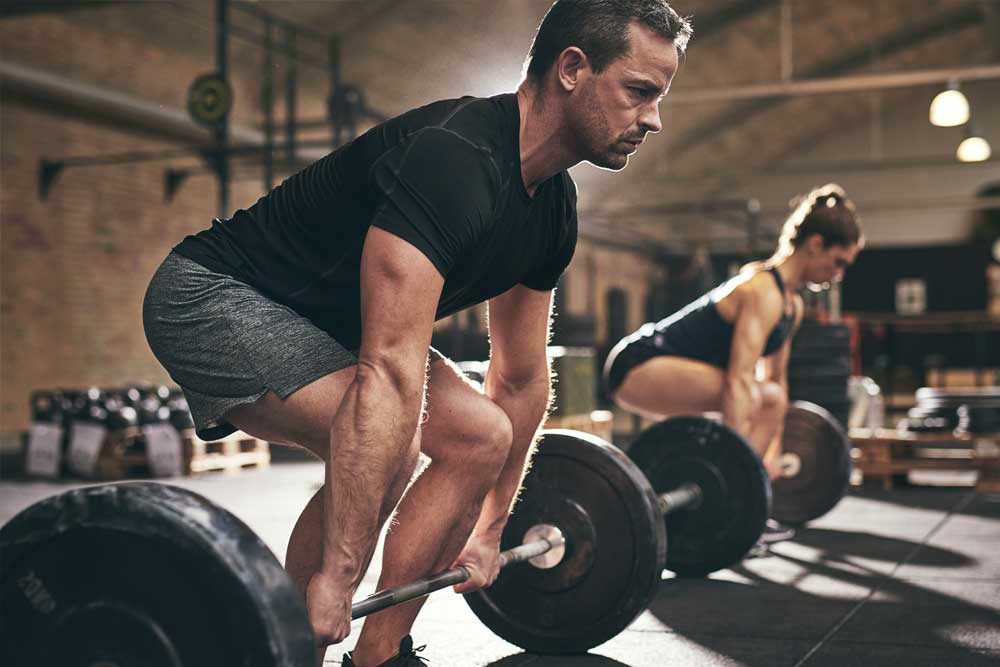
Most people I’ve worked with fall into Goal #1. Their intent is to maximise fat loss while minimising muscle loss.
Following my calorie and macro guidance will ensure that minimal muscle is lost. Here is an example of how to use the macronutrient calculator above.
Using the macronutrient calculator above, under Preset select “Cut – Maximum Fat Loss”. You’ll notice the macronutrient calculator will take your TDEE and remove 20%. In other words, to maximise fat loss without starving yourself or feeling hungry, in the fastest time, your calorie target will be TDEE minus 20%.
The macronutrient calculator will display this as “Total Calories”.
If your TDEE is 2512 calories per day, your calorie target will be TDEE minus 20% which is 2010 calories per day. Round the number to the nearest 100 calories and try and fall within 100 calories of the target. You can enter your calorie target directly into a calorie tracking app like MyNetDiary or MyFitnessPal and you are well on your way 🙂
When I was in a calorie deficit, I was also doing heavy resistance training. This is very important! I followed the push-pull-legs guide while I was in a calorie deficit.
One of the common push-backs from people I get is: “Brad, that is way too much protein!”.
I wish we didn’t require so much protein as trainees in the gym… but science typically recommends around 1.6 to 1.8 grams per kilogram of body weight per day (even higher in some instances depending on energy intake, carbohydrate availability, exercise intensity, protein quality, gender, age, etc.)
If you are serious about losing fat and gaining muscle, you need to get serious about increasing your protein intake. When I started my fitness journey, I was reluctant to increase my protein intake but when I finally believed the science, I started to see results!
The truth is, there is plenty of science which advocates high protein dieting for maximum body composition.
You’ll notice the calculator will set your protein to 40% of your total calories. If you want, you can manually enter in a different protein percentage (i.e., 30%) and carbohydrate and fat percentages will change automatically.
The macronutrient calculator has been designed to assign 40% of your calorie target to carbohydrate and 20% to fat. This is not a hard and fast rule. I’ve worked with people that prefer more fat than carbohydrate and vice versa.
I’ll let you experiment with this yourself. You can manually enter in different percentages for carbohydrate and fat in the macronutrient calculator.
Personally, I prefer to eat as many carbs as possible and the rest of my calories from fat. Higher carbs translates into more happier weight lifting sessions, better energy levels, and less hangry-ness 🙂
Just keep in mind that to maintain a certain level of health, you must get at least 10-15% of your total calories from fat.
And remember, eating fat doesn’t make you fat. Over-eating your target calories will make you fat!

Start Your Transformation Today!
Reach your fitness transformation goals of shredding fat, building muscle, and getting stronger, in the shortest time, without crazy dieting or buying useless sports supplements.
Learn MoreGoal #2: Macros for Building Muscle (“Bulking”)
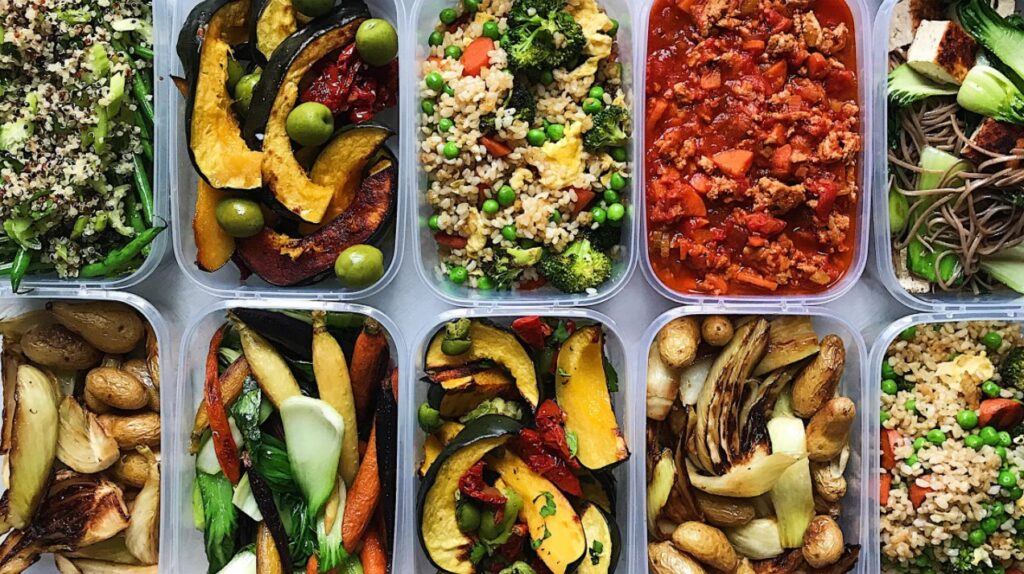
Most people usually need to start with Goal #1 and chop down fat before they try and set out to maximise muscle gain. It’s much harder to build muscle if your body fat percentage is too high.
If you are unsure what your body fat percentage is, you can use this rough guide to estimate your body fat percentage.
For me, I start all of my bulks at around 10-12%, sometimes at around 7-8%. This can be psychologically challenging because you will begin to lose muscle definition, especially that shiny little six pack that you worked so hard to pop out during the cutting process.
The reason for this is because bulking for maximum muscle gain means a slight increase in fat (but not much). This is unavoidable if you are steroid-free! For guys, once you reach a body fat percentage of around 20% or so, it is time to stop the bulk and commence the cut (Goal #1)
For women, the idea of “bulking” instils quite a lot of fear as it brings up the conversation around not wanting to be “big and muscly”. That their ambition is to get “toned”. The truth is, all steroid-free women can never build muscle like a steroid-free man. And “toning” is only achieved by building muscle!
Here is my guidance for finding your calorie target and macronutrient requirements for a successful bulk (use the macronutrient calculator above).
Using the calculator above, under Preset select “Bulk – Maximum Muscle Gain”. You’ll notice the calculator will take your TDEE and add 10%. In other words, to maximise muscle gain (while minimising fat gain), your calorie target will be TDEE plus 10%.
The calculator will display your calorie target as “Total Calories”.
If your TDEE is 2515 calories per day, your calorie target will be TDEE plus 10% which is 2767 calories per day. Round the number to the nearest 100 calories and try and fall within 100 calories of the target.
Your protein requirements during a bulk will still be high (they need to be). They will usually make up around 35% of your calorie target.
In terms of bulking for maximum muscle gain, most guys (and gals) will increase their carbohydrate intake while leaving their fat the same. Some people struggle to maintain a calorie surplus of TDEE plus 10% by simply increasing carbohydrate. This is when increasing your fat will help you due to the calorie-dense nature of fat (1 gram = 9 calories).
Goal #3: Macros for Maintenance

As I re-write this article in October 2021, I’ve been at or around maintenance calories and macros for the past 4.5 years. Only because I’ve been quite happy with my results and no longer need to toggle between bulking and cutting.
For most people starting their journey, you’ll be toggling between bulking and cutting 2-3 times before settling on maintenance. Tracking calories and macros will ensure that you get results but you won’t need to do it for the rest of your life.
I usually maintain my physique by doing the following;
- Setting my target calories to TDEE.
- I keep my protein at around the same for a bulk or cut.
- I get the rest of my calories from a combination of carbohydrate and fat.
And what is great about maintenance is that I don’t use meal plans or food tracking applications anymore. After years of experience, I usually know intuitively how much protein, carbohydrate, and fat I’ve consumed. I haven’t weighed or measured my food intake since June 2017 (4.5 years ago!).
After completing several bulks and cuts, you’ll find yourself in my situation where you will enjoy the benefits of intuitive eating (IE). A concept where you no longer use meal plans or tracking apps to meet your calorie and macronutrient needs.
It Starts with Calories
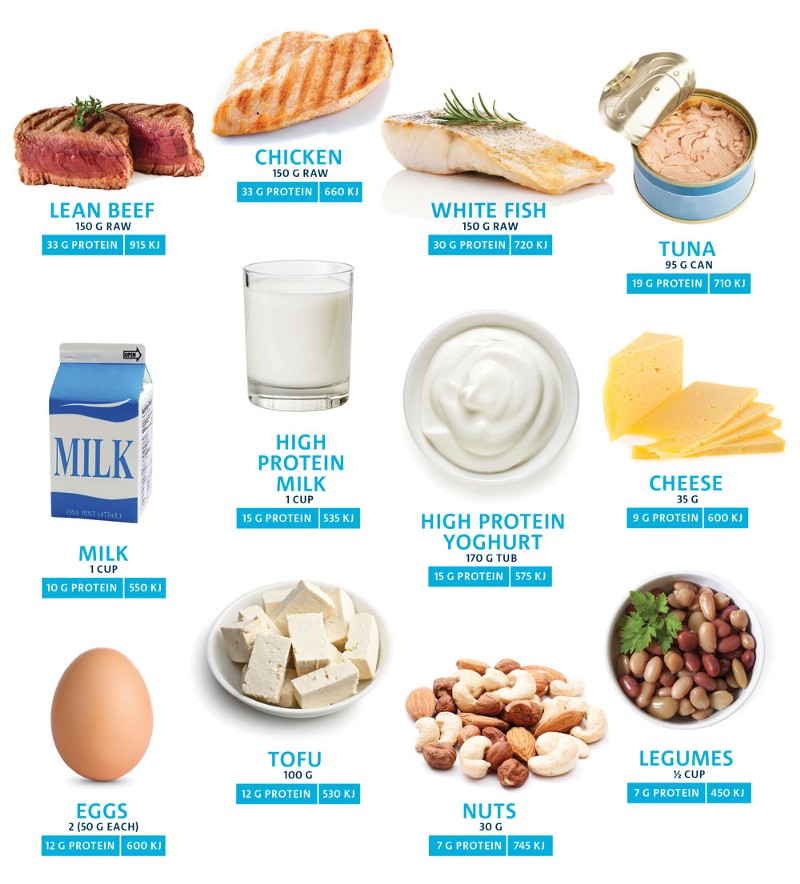
You may have heard of “energy balance” which boils down into two very simple but extremely important concepts.
- To lose weight, you must eat less calories than your TDEE (calorie deficit)
- To gain weight, you must eat more calories than your TDEE (calorie surplus)
And what you’ll find compelling is if you look at every single diet on the market, they all follow the foundation principle of energy balance, or the first law of thermodynamics.
Does this mean you need to “count every calorie!”? Absolutely not! As I re-write this article in October 2021, I have not actively tracked a single calorie since 2017 and have managed to stay in shape. But if you are starting your fitness journey, you need to understand the principle of energy balance or you’ll be forever spinning your weight loss wheels.
You don’t need to cut out all of your favourite foods to lose weight. It is more important to consider the relationship between total caloric intake and output versus weight gain and weight loss.
If you can stop and learn the following two basic principles, you’ll be well on your way to dietary freedom and the world of macronutrient flexible dieting.
- If you consistently consume fewer calories than you burn, you’ll lose weight, even if those calories come from junk food.
- If you consistently consume more calories than you burn, you’ll gain weight, even if those calories come from the “cleanest” food sources.
There are several real world experiments that set out to “prove” that you can get lean by eating junk food, provided you consistently consume fewer calories than you burn.
My favourite is the study by nutrition Professor Mark Haub, who lost 27 pounds in 10 weeks by consuming his entire calorie “allowance” in protein shakes, Doritos, Little Debbie snacks, Twinkies, etc. After this study, he became known as the “Twinkie Diet” Professor. Here is the article you should check out about the Twinkie Diet professor.
“Calories-in Calories-out”
When it comes to weight loss and weight gain, it is all about the quantity of calories not the type of calories you consume.
As you saw earlier, the Twinkie diet professor managed to lose 27 pounds on a “convenience store” diet, by eating no more than 1,800 calories per day! Or consuming fewer calories than what his body needed (which he calculated to be 2,600 calories).
But this is by no means a healthy way to lose weight! And failing to consider getting the right amount of your “macros” through protein, carbohydrate, and fat, will mean you’ll lose weight in the form of fat and muscle (rather than just fat!). This leads to becoming skinny-fat. Yet another problem I faced because I failed to consider my macros and I only focused on “calories in calories out”.
When I finally figured out my macros (using the calculator above); which is why I am so passionate to ensure you don’t overlook this section of the article, was the moment I started to maximise my body composition.
The aim of the game is not weight loss. To achieve a great physique (for men and women), or maximise body composition, requires attention to building muscle and losing fat through setting your calorie target and then figuring out your macronutrient requirements.
When it comes to body composition; a calorie is not a calorie. Eating junk food will not set you on a path for a great physique.
There is another important distinction that I want to make. If you want to maximise body composition, then you shouldn’t be referring to this ambition as “weight loss” but, rather, losing fat while preserving muscle. Alternatively, when it comes to “bulking” the objective is to gain muscle while minimising fat gain.

Start Your Transformation Today!
Reach your fitness transformation goals of shredding fat, building muscle, and getting stronger, in the shortest time, without crazy dieting or buying useless sports supplements.
Learn MoreThe Most Important Macronutrient… Protein!
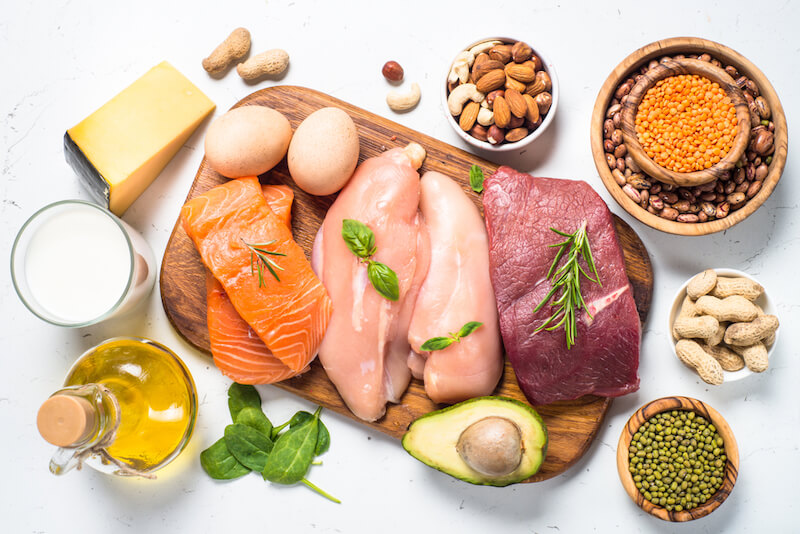
I know some of you are thinking that I am making such a bold and short-sighted claim because all macronutrients and micronutrients are important 🙂 But when it comes down to body composition goals, protein is the most important macronutrient of the three. Protein will dictate your body composition more than carbohydrate or fat.
One of the biggest mistakes I made when I started my fitness journey was failing to consistently get enough protein through my diet. I would walk into the gym and randomly lift a bunch of weights and when I left, I wouldn’t bother with ensuring I was getting over 150 grams of protein per day (including rest days!). It was the fundamental reason why I didn’t see the fruits of my labour in the gym for a very long time.
There are several benefits to high protein dieting for optimum body composition. Here’s a few benefits:
- High protein dieting is more effective for helping to cut down body fat while preserving muscle (in a calorie deficit).
- Eating protein is effective for building muscle.
- Increases satiation and helps reduce cravings which usually show up when you are in a calorie deficit. For me, this was one of the greatest benefits when I diet in a calorie deficit to get really lean because a protein snack (or two) kills any cravings that show up.
I know that some of you reading this understand that whenever you are undertaking weight training, you are breaking down muscle fibres. This automatically increases the requirement to consume more protein so that your body can begin the process of repairing damaged muscle tissue.
Failing to increase your protein intake as a regular gym-goer will mean you will lose muscle over time (not gain it!)
Therefore, please ensure you figure out your protein requirements (using the macronutrient calculator above) and consistently aim to get enough protein (through food or protein supplements like whey or casein). Even on “rest days”, when your body is still continuing the process of muscle repair, you must continue to consume increased protein requirements from training.
What about Carbs?
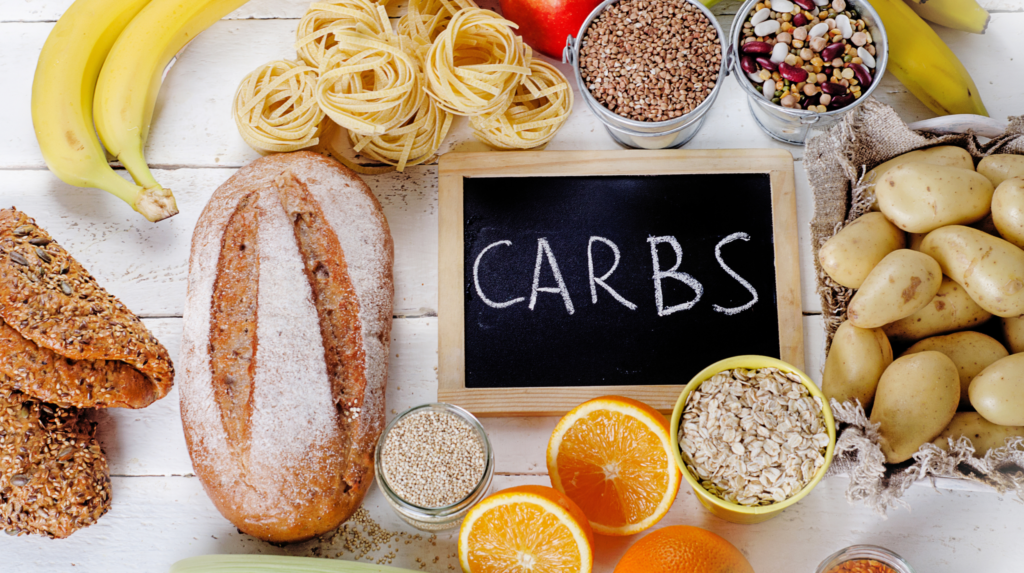
On to the second macronutrient… the carbohydrate.
This macronutrient is probably one of the most misunderstood of them all. There are so many misconceptions and schools of thought which either demonize or embrace them.
From someone that has experimented with zero carb, and high- and low-carb dieting. And gone on to compete and win several amateur (steroid-free) bodybuilding competitions… carbs are essential for your sanity! 🙂 Life is so much harder without them.
Don’t let anyone convince you that you don’t need them for optimal body composition.
When I am dieting to reduce fat and maintain muscle for body composition, I will aim to include around 30-40% of my total calories from carbohydrate, even on “rest days.” There are some people I’ve worked with that prefer a slightly higher fat intake than carb to help stave off cravings. Other people prefer higher carb and very little fat. This is completely a personal preference and when it comes down to figuring out your macronutrient requirements; you should experiment with both (higher carb, low fat vs lower carb, higher fat).
Never compromise on protein! 🙂
The last one… Fat!
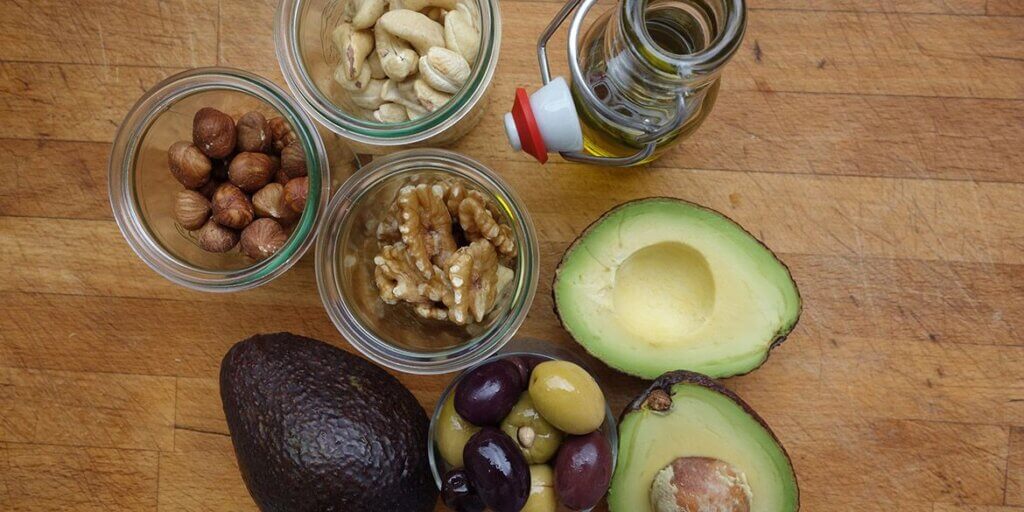
This macronutrient induces more fear into the masses than anything else in dieting. To be honest, when I first started my fitness journey, I was also fearful of consuming any fat in my diet. You can’t blame me because many professionals believed that eating fat made people get fat.
Thankfully, science has since evolved and we can now finally get to the bottom of how we can use fat in our diets to help us lose fat (and maintain muscle). Sounds confusing? 🙂
I used to believe that if I ate fat then I’d get fat. Then later on, my dieting beliefs evolved into: if I eat “good fats” and not “bad fats” then I’d not get fat. I was wrong on both accounts.
When it comes down to health (not body composition), eating mostly good fats will help prevent the dangers associated with bad fats. But as per our previous discussion, whenever we violate the rule of energy balance and consume more calories (from fat) than what our body needs… you will gain weight. No matter how healthy the fat source.
For a long time, before I figured out how to calculate my calories and macronutrient requirements, I used to eat avocado on wholegrain bread (crazy I know!). I believed that “eating healthy fats” would help me “lose weight”. Well… I never lost weight because I failed to recognize the requirement to consistently maintain a calorie deficit.
So while fat is important for hormone production, insulin sensitivity, and a host of other biological functions, there is a striking benefit to reducing your fat intake to around 20% of your total calorie target. The reason is that every gram of fat you consume equates to 9 calories.
If you don’t pay close attention to your fat intake, you will easily exceed your calorie target and slow the process of fat loss. Also be very mindful of tracking exactly how much olive oil, salad dressing, and peanut butter you use with MyNetDiary (or MyFitnessPal). Failing to do this will often mean exceeding your calorie target for the day! This can be beneficial if you are bulking but detrimental to cutting.
But completely removing fat from your diet will guarantee that you will put your health in jeopardy. Dietary fat is essential 🙂
Putting it all together
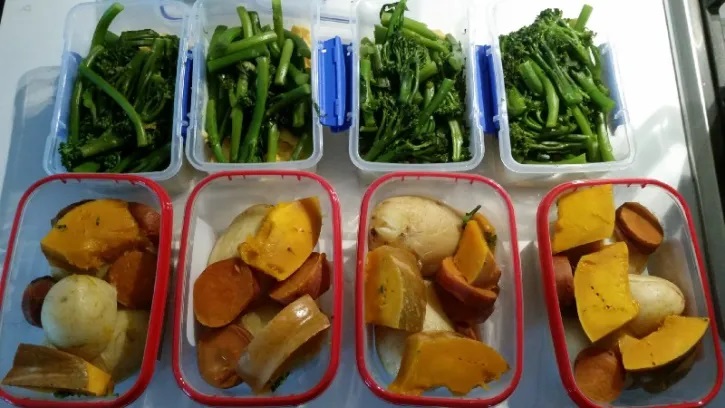
There is a lot to learn but once you understand these fundamentals then you will be set for life. I suggest you come back to this article a few times and slowly digest it over time. It certainly took me several months to understand the fundamentals.
Understanding the fundamentals of energy balance and clarifying your goal of maximising body composition, as opposed to “weight loss”, will help to establish correct dieting behaviours.
Here are a few take-away points:
- Weight loss and weight gain follows the principles of energy balance, irrespective of the diet label (Paleo, Atkins, or vegan).
- The quantity of calories you consume, not food choices, dictates whether you will gain or lose weight.
- Eating “clean” or “dirty” calories is irrelevant when it comes to weight loss.
- The aim of the game is maximising body composition. Either by losing fat and maintaining muscle (during a “cut”) or building muscle while minimising fat gain (during a “bulk”).
- Figuring out your calorie target and how those calories break down into the macronutrients of protein, carbohydrate, and fat, will set you on the path of maximising body composition.
- For body composition purposes, protein is the most important macronutrient.
The day I finally wrapped my head around these principles was the day my body (and my life) started to transform before my eyes.
- Find your target calories and how those calories break down into macronutrient requirements.
- Enter your target calories and macro numbers into either MyNetDiary or MyFitnessPal (or a meal planning template. Check them out here.)
- Use the barcode scanner in MyNetDiary or MyFitnessPal to record all food you consume. Or, you can create your own meal plan using my meal planning templates for bulking or cutting here.
- Be patient and consistent for at least 6 to 8 weeks. And you will be well on your way to transforming your body before your own eyes! I can’t stress this enough. Trust the process and give this 6 to 8 weeks.
I know some of you are thinking that tracking calories and figuring out macronutrient requirements is an absolute nightmare. The only reason why I persevered and gave flexible dieting a chance was I was open-minded and willing to give it a chance. After the first few weeks of tracking calories and macros, I was well on my way and it became an easy habit to follow.
The first week of starting this journey will be tough. You might forget to record certain meals in MyNetDiary or you might “go over” your calorie target on certain days.
If you are eating at a restaurant, you’ll find that many popular restaurants have listed their menu items within the database of MyNetDiary or MyFitnessPal. Alcohol consumption can also be recorded in these apps! Of course, during the next 6 to 8 weeks, try and keep alcohol consumption and restaurant adventures to a minimum. At least until you have a firm grasp of flexible dieting and the practical application of them.
And using the principles I share in this article, I was able to manipulate my body composition with ease to prepare for various amateur bodybuilding competitions. Something that I never thought in a million years I’d ever participate in.
Lastly, give this a chance! Have an open mind and try it. Don’t worry if you struggle in the first week or so. Just take it day by day and you will be astonished at the results you can achieve. As I’ve mentioned, you don’t need to be precisely hitting your targets. Try to be within 100 to 150 calories of your Target Calories.




